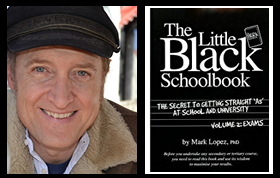Dr Mark’s The Meaning in a Nutshell
Tennessee Williams, A Streetcar Named Desire (1947)
The play by Tennessee Williams A Streetcar Named Desire (1947) centres around a dramatic clash between the characters of Blanche DuBois and her brother-in-law Stanley Kowalski.
At one level, Williams uses these characters to represent a clash of cultures. As a southern belle whose looks are fading, Blanche represents the Old South in decline with its affectations of elegance, etiquette, breeding and chivalry, which are compromised by sexual hypocrisy and decadence. To this depiction of the Old South can be added the disintegration of its economic foundations due to the erosion of the great plantations that were incrementally sold off to pay debts. Williams’ attitude to this culture is ambivalent. Finding it fascinating, he sees it as impressive in aspects but ultimately riddled with contradictions, anachronistic, and doomed. By contrast, Stanley represents the upwardly mobile proletariat or working class of new America. The industrial economy is rapidly displacing the agricultural economy and Stanley represents a new kind of American, the descendent of European migrants, a patriotic war-veteran who is economically viable, with prospects to rise further socially. Although not without flaws, he has a future and he represents the vitality of a new social order. Former adherents to the values of the Old South will have to join his world to survive.
At another level, the play represents a study in human motivation and behaviour interpreted through the paradigm of Freudian psychoanalysis. As the reference to ‘desire’ in the title of the play suggests, the characters are primarily motivated by sexuality, which Williams treats as a primal urge. This is especially evident in the characterisation of Stanley as sexually potent and powerful, attractive and confident enough as a peacock to take his pick of the hens, possessing social-Darwinian vitality. With the other characters, like Blanche, her sister Stella, and Stanley’s friend Mitch, sexuality is equally central to understanding their motivations and behaviour. Much of the dialogue and dramatic interactions between the characters is crafted to reveal, in Freudian terms, the sexually motivated dimensions of human nature with a confronting honesty.
Student resources by Dr Mark Lopez
© Mark Lopez 2021 All RIGHTS RESERVED
The purpose of the concise notes of Dr Mark’s The Meaning in a Nutshell is to provide much needed help to students seeking to unlock the meaning of the texts with which they have to deal. (More elaborate notes are provided in lessons as part of my private tutoring business.)
Subject: A Streetcar Named Desire meaning, A Streetcar Named Desire themes, A Streetcar Named Desire analysis, A Streetcar Named Desire notes
